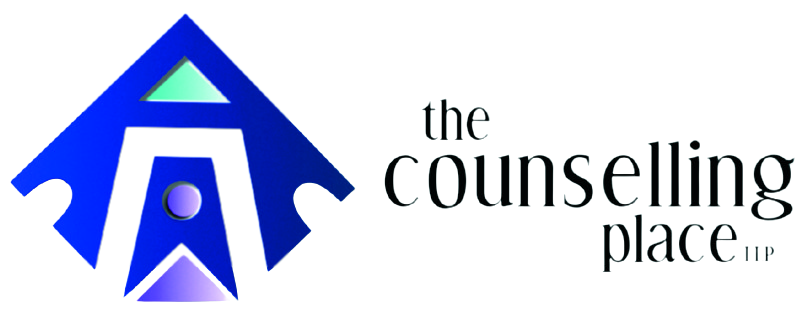The Cycle of Abuse and How to Seek Help
by Anne Ueberbach
Assistant Director/Counsellor
The Cycle of Abuse and How to Seek Help
Abuse is a pervasive issue that can have devastating effects on individuals and families, with the most common type of abuse being spousal abuse. Breaking the cycle of abuse requires understanding its psychological mechanisms and knowing how to seek help. In this blog post, we'll delve into the cycle of abuse, its psychological impact, and avenues for seeking support in Singapore.
Domestic Violence vs Family Violence
When we hear the word “abuse” we often wrongfully assume that it refers to domestic violence, however family violence is as commonly occurring as domestic violence. Domestic violence and family violence are often used interchangeably, but they encompass slightly different aspects of abusive behaviours. Domestic violence typically refers to abuse that occurs within intimate partner relationships, such as spouses or partners, whereas family violence encompasses a broader range of abusive behaviours within familial relationships, including child abuse, elder abuse, and abuse between siblings or other family members. While both types of violence involve the exertion of power and control over vulnerable individuals, family violence extends beyond intimate partner relationships to encompass abuse within the family unit as a whole. Both forms of violence have profound impacts on victims' physical, emotional, and psychological well-being, highlighting the importance of raising awareness, providing support, and implementing preventative measures to address these pervasive issues in society.
Types of Abuse
-
Hurt caused by punching, kicking, pushing, choking, slapping or hitting with objects; deprivation of food or water, sleep, shelter or medicine.
-
Use of insults, humiliation or name-calling to damage the spouse’s self worth; puts the spouse in fear by screaming, making threats, harassing or destroying property; deliberately misusing the emotional factors in a relationship in order to manipulate and intimidate the spouse.
-
Controls the flow of information in and out of the house; demeans the spouse in front of the children or in public places; monitors and restricts the spouse’s activities, outings, family ties, and friendships.
-
Any form of unwanted or disrespectful touching or any non-consenting sexual act or behaviour such as physically attacking parts of the victim’s body or forcing sexual activity when the victim refuses to consent or is too afraid to refuse.
-
Extending power and control into your financial situation.
Examples:
-Preventing you from viewing or accessing bank accounts
-Collecting your salary / pay checks
-Stopping you from working
-Getting you fired -
Digital abuse is the use of technology and the Internet to bully, harass, stalk, intimidate, or control a partner. This behavior is often a form of verbal or emotional abuse conducted online.
Understanding the Cycle of Abuse:
The cycle of abuse is a pattern that often characterizes abusive relationships. It typically consists of four phases:
Tension-Building Phase: Tension and stress gradually escalate in the relationship. Communication breaks down, and the victim may feel as though they are walking on eggshells to avoid triggering the abuser.
Incident Phase: In this phase, the tension reaches a boiling point, leading to an abusive episode. This can involve verbal, physical, or emotional abuse, with the abuser exerting control and power over the victim.
Reconciliation Phase: Following the abusive incident, the abuser may express remorse, apologize, and promise to change. They may shower the victim with affection and promises of love, leading the victim to believe that the abuse was an isolated incident and that the relationship can be salvaged.
Calm Phase: During this phase, the relationship appears to return to normal, with tension temporarily dissipating. However, underlying issues remain unresolved, setting the stage for the cycle to repeat itself.
Psychological Impact of Abuse
The cycle of abuse takes a significant toll on victims' psychological well-being. Victims may experience a range of emotions, including fear, shame, guilt, and low self-esteem. They may also develop symptoms of anxiety, depression, post-traumatic stress disorder (PTSD), and other mental health issues as a result of the abuse.
Additionally, victims of abuse may struggle with feelings of isolation and hopelessness, believing that they are trapped in the abusive relationship with no way out. This sense of powerlessness can further perpetuate the cycle of abuse, making it difficult for victims to seek help or break free from the abusive situation.
Seeking Help in Singapore
Fortunately, there are numerous resources available in Singapore for individuals experiencing abuse and seeking support. Here are some avenues for seeking help:
Emergency Hotlines: In cases of immediate danger or crisis, victims can call emergency hotlines such as the Singapore Police Force (999) or the Samaritans of Singapore (SOS) 24-hour hotline (1800-221-4444) for confidential support and assistance.
Family Service Centres (FSCs): FSCs provide a range of services and support for individuals and families experiencing domestic violence and abuse. They offer counselling, crisis intervention, safety planning, and referrals to other community resources.
Care Corner Singapore: Care Corner Singapore is a non-profit organization that offers counselling, support groups, and crisis intervention services for individuals experiencing abuse, including domestic violence, elder abuse, and child abuse.
AWARE (Association of Women for Action and Research): AWARE is a non-profit organization dedicated to promoting gender equality and ending violence against women. They offer support services, legal assistance, and advocacy for survivors of abuse.
Hospital Social Service Departments: Hospitals in Singapore often have social service departments that provide support and assistance to individuals experiencing abuse. They can connect victims with counselling services, legal aid, and other resources.
Legal Aid Bureau: The Legal Aid Bureau provides free legal assistance and advice to low-income individuals facing legal issues, including those related to domestic violence and abuse. They can assist with obtaining protection orders, divorce proceedings, and other legal matters.
Need help?
Our team of highly experienced counsellors, psychologists and psychotherapists can support you on your journey to identify and overcome domestic or family violence.



